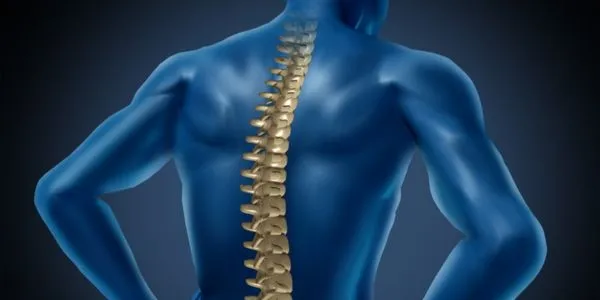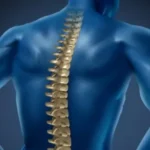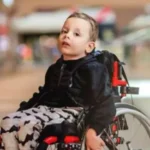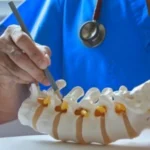Spinal Muscular Atrophy is a tough genetic condition that causes damage to motor neurons, leading to increasing muscle weakness and mobility problems. Families in Delhi NCR who face this challenge need to understand the disorder and seek skilled medical help. Consulting the best spine doctor in Delhi ensures access to advanced diagnostic tests and personalized treatments. Visiting a top specialist can make a significant difference in the patient’s health, comfort, and overall quality of life.
What is Spinal Muscular Atrophy?
To learn about Spinal Muscular Atrophy (SMA) is to understand its treatment options and care needs. SMA causes muscle weakness and shrinking due to the loss of motor neurons in the spinal cord and brainstem. It is a serious genetic disease. Around 1 in every 10,000 babies are affected by SMA making it one of the top genetic reasons for infant deaths.
This disorder happens because of changes in the SMN1 gene, which is important for the survival and function of motor neurons. The number of SMN2 gene copies plays a key role, as they make up for the faulty SMN1 gene. The more SMN2 copies the less severe the condition tends to be. Knowing these genetic details helps families choose better medical treatment and prepare for ongoing care.
Causes of Spinal Muscular Atrophy (SMA)
Genetic mutations in the SMN1 gene, found on chromosome 5 cause SMA. This gene creates the survival motor neuron protein that the body needs to keep motor neurons healthy. When both SMN1 gene copies are missing or damaged, the body fails to make enough SMN protein. This shortage causes motor neurons to break down.
The SMN2 gene is quite like SMN1 but makes around 10% of the needed functional SMN protein. People have different numbers of SMN2 copies, which has an impact on how severe the disease is. Having more copies leads to milder symptoms and a later onset of the disease. This knowledge about genetics has led to a big shift in treatments, with newer therapies focusing on boosting SMN protein production.
SMA is a genetic condition and isn’t affected by environmental factors. It is passed down in an autosomal recessive way. A child can get SMA if both parents pass on the faulty gene. In such cases, there is a 25% chance during every pregnancy that the child will be born with the disease.
Symptoms of Spinal Muscular Atrophy (SMA)
The symptoms of SMA can differ a lot based on how severe the condition is and what type it is. Spotting these signs early matters to start treatment on time and get better results. The first signs people notice are extreme muscle weakness in muscles close to the center of the body, and delays in reaching motor milestones.
Babies with SMA often show a condition called hypotonia also known as “floppy baby syndrome.” These infants may feel limp and struggle to hold their head up or sit without help. Over time weaker muscles make crawling, walking, or doing normal motor activities for their age difficult. Breathing often becomes a major problem because the muscles that help with it grow weaker too, and this needs quick medical care. Other important symptoms are trouble swallowing. This may cause issues with eating and risks of food going into the lungs. Shaking in the hands and fingers can also happen, along with joints becoming stiff over time because of weak muscles. A skilled best spine doctor in delhi has a big impact on how well treatment works through early care methods and regular management plans.
Types of SMA and Classification
| SMA Type | Age of Onset | Motor Milestones | Life Expectancy | Key Characteristics |
| Type 0 | Prenatal | Never achieved | Months | Most severe, respiratory failure |
| Type I (Werdnig-Hoffmann) | 0-6 months | Never sit independently | 2 years without treatment | Severe hypotonia, feeding difficulties |
| Type II | 6-12 months | Sit but never walk | Normal with care | Intermediate severity, scoliosis common |
| Type III (Kugelberg-Welander) | >12 months | Walk independently | Normal | Milder symptoms, gradual progression |
| Type IV | Adult onset | Normal development | Normal | Mildest form, slow progression |
This system helps doctors such as the best spine surgeon in Delhi, create proper treatment plans and share clear prognosis details with families. Managing each type of SMA needs different methods. Type I often demands intensive breathing support, while Type III focuses on helping patients with movement.
Treatments for Spinal Muscular Atrophy (SMA)
Treatment for SMA has seen huge changes thanks to new therapies. There are three treatments approved by the FDA: Nusinersen (Spinraza), Onasemnogene abeparvovec (Zolgensma), and Risdiplam (Evrysdi). These drugs target the root problem by boosting SMN protein levels in the body.
Doctors give Nusinersen through intrathecal injections into the spinal fluid. Skilled medical experts are crucial to perform this procedure. Patients needing such specialized care benefit from advanced less invasive methods. best endoscopic spine surgeon in delhi delivers these techniques to provide better recovery results.
Vital is supportive care, which includes managing breathing problems, providing proper nutrition, and delivering physical therapy along with orthopedic care. A complete care system at a top spine hospital in Delhi involves a team of different specialists. Neurologists, pulmonologists, orthopedic doctors, and rehabilitation experts work together to improve outcomes for patients.
Advanced SMA Treatment for Better Spine Health
Sant Paramanand Hospital ranks among the top spine hospitals in Delhi providing advanced facilities to treat SMA patients. It delivers care by blending modern medical technology with empathy helping patients achieve the best treatment results.
Dr. Amit Shridhar is considered one of the leading spine doctors in Delhi and has 25 years of focused experience in handling spinal disorders. He earned his MBBS from Manipal Academy of Higher Education, pursued a DNB in Orthopaedics at Sant Parmanand Hospital, and completed an MCh in Orthopaedics in the UK. His knowledge of invasive spine surgeries and spinal trauma treatments equips him to meet the complicated requirements of SMA patients.
The hospital offers robotic surgeries, tools for real-time imaging and navigation, and a special physiotherapy center. Many know Sant Paramanand Hospital as the best spine surgery hospital in Delhi. The hospital handles tough spinal problems making it a reliable choice for families seeking care.
Case Study: Patient Experience with SMA Treatment
Rajesh Kumar is a 35-year-old software engineer from Gurgaon. He started feeling his legs weaken and found it hard to climb stairs. At first, he thought it was just tiredness from work, but his condition got worse over six months. He visited many doctors before being sent to Dr. Amit Shridhar at Sant Paramanand Hospital.
After running detailed diagnostic tests, including genetic analysis, doctors found that Rajesh had Type IV SMA. A customized treatment plan was created for him, which included Risdiplam therapy along with focused physiotherapy and occupational therapy. A team of experts worked together to address every aspect of his condition.
Rajesh says, The care at Sant Paramanand Hospital went beyond what I had expected. The medical team explained everything about my condition and ensured my family was involved throughout the treatment. The nurses were amazing, and the physiotherapy team helped me stay mobile and independent.
Eighteen months later, Rajesh can still walk on his own and works full-time. His experience shows how crucial it is to diagnose SMA and provide all-around care to manage it .
Caregiver Tips and Resources for SMA
Taking care of someone with Atrophy (SMA) takes time, effort, and understanding, along with the right resources. Families who face SMA should know more about Spinal Muscular Atrophy, its effects, and the available care options. They can turn to the best spine surgeon in Delhi to explore surgical solutions if needed. However, much of the daily care rests with family members who take on the role of caregivers.
Key caregiving methods include helping the person stay in positions that prevent stiffness, ensuring proper nutrition and hydration, and closely monitoring their breathing. Regular physical therapy supports muscle strength and helps keep joints flexible, while occupational therapy focuses on practical techniques to manage daily activities.
Creating a supportive home environment involves removing movement barriers, setting up essential items like hospital beds or wheelchairs, and keeping medical supplies accessible. Providing emotional support to both patients and caregivers is equally vital — support groups or counseling can make a significant difference.
Planning finances is also crucial because Atrophy treatments can be very expensive. In Delhi, families often spend around ₹40,000 each month on physiotherapy, and advanced treatment options like Zolgensma can cost up to $2.1 million. To manage these expenses, families frequently rely on crowdfunding, insurance benefits, or government assistance programs.
Why Choose an Expert for SMA Care
The spine surgeon is known for successful treatments and happy patients. A complete approach toward SMA care is followed, focusing not only on medical treatment but also on educating families and planning long-term care. Sant Paramanand Hospital is trusted for SMA treatment in the Delhi NCR area for its combination of expert medical skills and compassionate care..
The hospital shows its dedication to top-notch care through regular high patient satisfaction ratings and many glowing reviews. Families value the close attention they get from doctors and nurses, the clean and cozy environment, and the hospital’s focus on giving great care after surgery.
Frequently Asked Questions (FAQ)
Q: Can SMA be cured?
A: SMA cannot be cured as of now. However, starting newer treatments can slow down the disease and make life better.
Q: How do doctors diagnose SMA?
A: Doctors use genetic tests to find mutations in the SMN1 gene clinical check-ups, and sometimes a muscle biopsy to diagnose SMA.
Q: Do adults get SMA?
A: Adults can have SMA. This is Type IV SMA, which appears later in life with less severe symptoms and progresses more .
Q: How expensive is SMA treatment in Delhi?
A: The costs vary a lot. Simple physiotherapy might cost ₹40,000 each month, while advanced gene therapies could cost crores of rupees.
Q: How can I find a good spine doctor in Delhi to treat SMA?
A:Search for doctors who have experience in treating neuromuscular disorders. Choose a specialist with proper training and access to advanced treatment options available at reputed hospitals like Sant Paramanand Hospital.
Conclusion
Spinal Muscular Atrophy is a complicated genetic disease that needs expert care and attention. Families in Delhi NCR can improve patient care and results by seeking help from skilled professionals like Dr. Amit Shridhar at Sant Paramanand Hospital.
Advanced medical treatments, proper care, and education for families build the basis of managing SMA . The path may be tough, but access to top-notch medical expertise and cutting-edge treatments brings hope to patients and their families coping with this condition.
If you or someone close to you shows signs of SMA, act to get a professional medical evaluation. Reach out to Dr. Amit Shridhar at Sant Paramanand Hospital in Delhi to book an appointment and learn more about the best treatment options available in the area.




